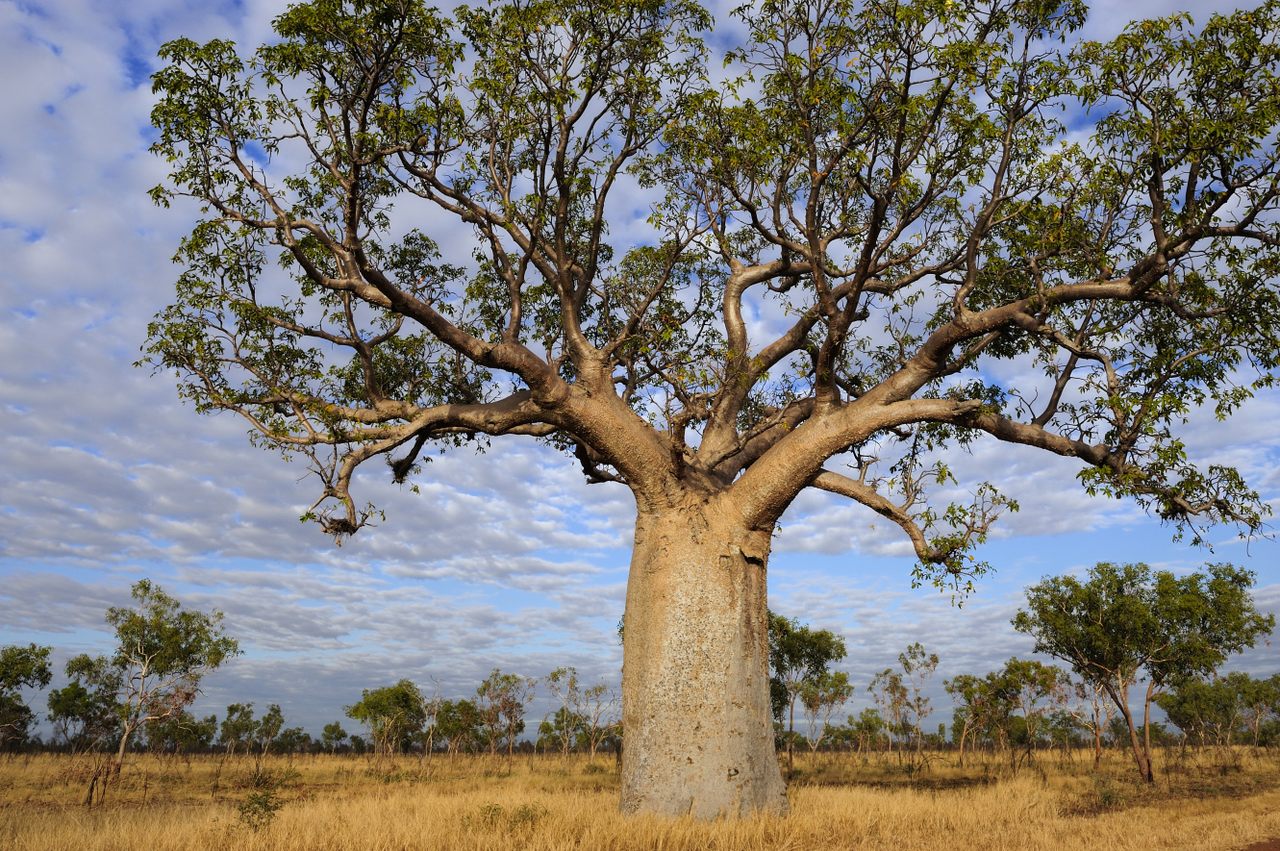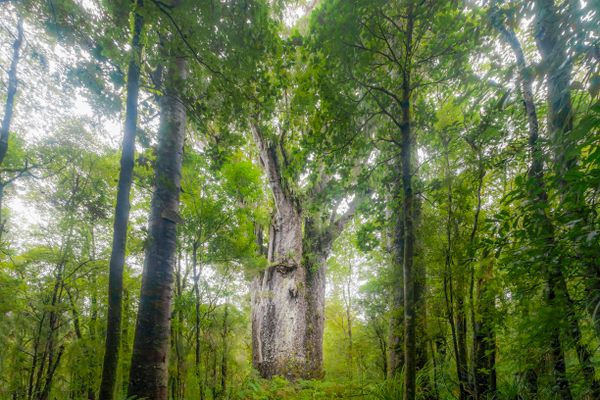Saving the Mystery Symbols Carved into Australia’s Boab Trees
Researchers are rushing to document the Indigenous art before it is lost to time and climate change.
The boab tree has loomed large in the culture and spirituality of the Indigenous Lingka Clan of northwestern Australia since time immemorial.
From its long, leafy limbs grow seeds shaped like sunbaked peaches, each one filled with a powdery white pith the flavor of cream of tartar. From its roots, string can be woven; from its sap comes medicine to soothe a stomach ache; and deep inside its bloated, bulbous trunk, as much as 26,000 gallons of water can be stored at a time, a lifeline in the dry season.
Standing like oil derricks on the largely treeless Tanami Desert, boabs are essential visual landmarks not just in this world but in the spiritual and ancestral one. For centuries, the Lingka have carved symbols into their bark to identify elements of their worldview.

But the trees are at a crossroads, according to Susan O’Connor, professor of archaeology at Australian National University in Canberra. Under the assault of a warming climate and human activity, “many of the carved boabs which were photographed in earlier times [already] cannot be relocated,” she says. Together with local First Nations people, she and her colleagues are working to record those that remain before they are lost forever.
Australia’s Indigenous communities are well known for their rock carvings, some of which date back at least 30,000 years. Less well known are Aboriginal dendroglyphs, motifs and images carved into tree bark in regions where there was little or no stone.
Carved trees had already been identified by colonial settlers in New South Wales and in the rainforests of northern Queensland when an expedition visited northwestern Australia in 1855. While the group recorded some of the region’s boab dendroglyphs, it wasn’t until the 1960s that archaeologist Ian Crawford made the first systematic attempt to photograph the Tanami Desert’s Indigenous artwork. The carvings marked preferred campsites and routes across the landscape, Crawford’s guides told him. They used their knives to re-cut those they encountered to keep them from fading into the bark.
But to the desert’s native Lingka Clan, the dendroglyphs were—and still are today—much more than landmarks for the living. “They are physical representations of stories associated with narratives within the landscape, including cultural practices that ensure the regeneration of resources,” explains Jane Balme, professor emeritus at Perth’s University of Western Australia.

In oral histories collected in the late 1980s, members of the Lingka intimated that the Tanami Desert dendroglyphs, many of which appear as the coiled or moving king brown snakes for which their clan was named, were related to the “Dreaming,” the general European term for the Aboriginal understanding of time and place beginning with creation. Emu and kangaroo footprints were also commonly represented on boab trunks, typically 1.5- to 6.5-feet from the ground, along with anthropomorphic and zoomorphic figures, lines, arcs, and oblong shapes.
Some of the Lingka carvings in the Tanami—22 have been historically documented, though only 12 were located in the 2021 survey conducted by O’Connor, Balme, and their collaborators—were almost certainly made to communicate favorable campsites, a hypothesis supported by the presence of grinding stone and stone tool fragments at the base of certain trees. All are located along a mythical, ancestral Lingka trackway stretching from just south of the town of Broome on the coast of Kimberley more than 600 miles through the Northern Territory.
The individuals who made the dendroglyphs and what exactly they were trying to communicate, however, is either not fully understood by Lingka descendants or is culturally sensitive information they have chosen not to share with the outside world. “The important thing to know about dendroglyphs is that they now read out of context to when they were created,” explains Wiradyuri historian and co-director of the Australian Centre for Indigenous History at Australian National University, Lawrence Bamblett, whose community in New South Wales also marked trees.
“They were created and written for people in specific places and contexts,” he continues. “Our Wiradyuri ancestors could read them to tell whose country it was by knowledge of patterns and meanings associated with certain types of markings. It’s a language, like any other, that’s open to interpretation.”

Although the Lingka Clan no longer “speaks” in the language of dendroglyphs, they hope to prevent it from disappearing altogether. In addition to activities like cattle grazing (cows bite and eat the bark at times of drought) and vandalism, the Tanami Desert boab are vulnerable to bark-boring insect infestations and bushfires, which are expected to increase along with a warming climate.
The prominence of the bottle-shaped trees on the landscape also makes them magnets for lightning. Strikes have destroyed some carved boabs already. “When they are hit by lightning the tree collapses and because the inner wood is soft and fibrous, it quickly disappears,” O’Connor explains.
Despite knowing what the boabs are up against, there isn’t much that can be done to keep the trees, and their carvings, safe. “It really isn’t possible to conserve the trees [so] our aim is to do the best quality recordings possible so that these can be archived for the future,” O’Connor continues.
In the rocky, unforgiving Tanami Desert, a place considered to be one of the most isolated and arid on Earth, that’s no simple task. Although the team knows of ten other carved boabs that, at least at one time, stood sentinel over the red-earthed landscape, they had no way of accessing them during their survey without off-road vehicles with “endless” tires.
“Boabs are such special trees, they all have remarkably distinctive growth shapes and they live for so long that they must have witnessed so many changes,” says O’Connor. “We need to go back to find the others.”






































Follow us on Twitter to get the latest on the world's hidden wonders.
Like us on Facebook to get the latest on the world's hidden wonders.
Follow us on Twitter Like us on Facebook